If you’ve ever dreamed of experiencing one of Peru’s most vibrant festivals, the Festivity of the Virgen del Carmen in Paucartambo is something you can’t miss. This magical town in Cusco, located at over 2,900 meters above sea level, comes alive every July in an explosion of color, music, and spirituality.
During the celebration, dozens of traditional dances fill the streets, representing not only devotion to the Virgen del Carmen but also a mix of social critique, history, and faith. Each group of dancers (known as “comparsas”) embodies a symbolic message passed down through generations.
Below are the most emblematic dances you’ll see if you visit Paucartambo, with a brief explanation of their origin and meaning within this grand celebration.
Saqra: the mischievous ones from the sky
The Saqra are the most playful and mischievous characters of the festival. They represent devils trying to distract the faithful from the spiritual path. With striking costumes, grotesque masks, and agile movements, they climb roofs and balconies, interact with the audience, and add humor to the procession.
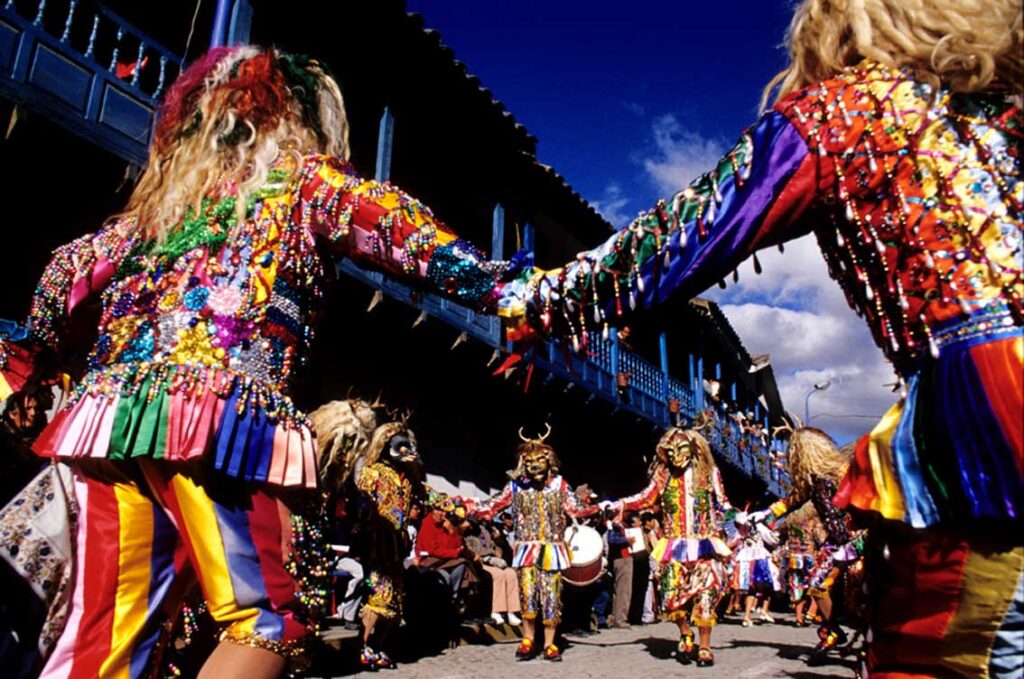
This dance blends Andean and European elements, reflecting the cultural syncretism of Peru’s religious festivals.
Qhapaq Qolla: merchants and devotees
This dance represents the ancient merchants of the highlands, known as Collas. They wear warm clothing, white-faced masks, and colorful ch’ullus (Andean hats). They carry goods, dance energetically, and honor the Virgen del Carmen in gratitude for their commercial success.
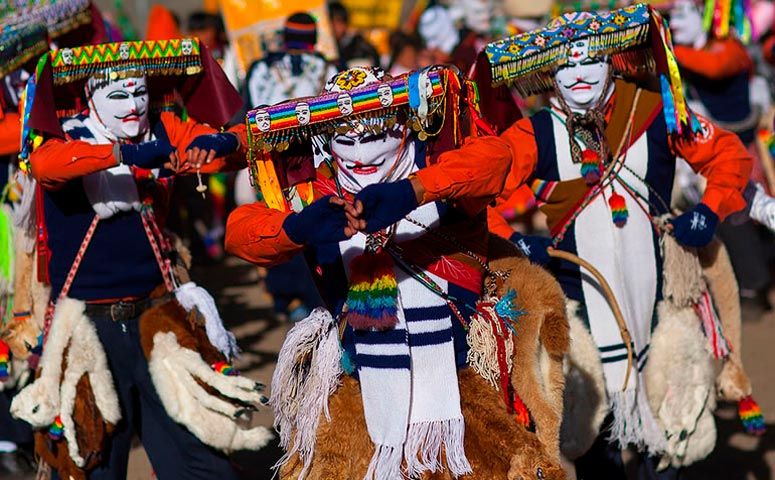
Through their movements, the Qhapaq Qolla remind us of the importance of barter, reciprocity, and travel in Andean life.
Qhapaq Ch’unchu: the jungle guardians
This dance symbolizes the peoples of the Amazon who came down to worship the Mamacha Carmen. With vibrant costumes, feathered headdresses, and strong movements, the Qhapaq Ch’unchu embody the bravery and purity of jungle warriors.

Their steps show respect for nature, the jungle spirits, and ancient alliances between communities.
Majeño: satire and joy
The Majeños represent the old wine and liquor merchants from Arequipa and Moquegua. They wear elegant clothing, wigs, and carry a hanging bottle as a symbol of their trade. They drink, laugh, and dance mockingly—criticizing excess and the vanity of economic power.
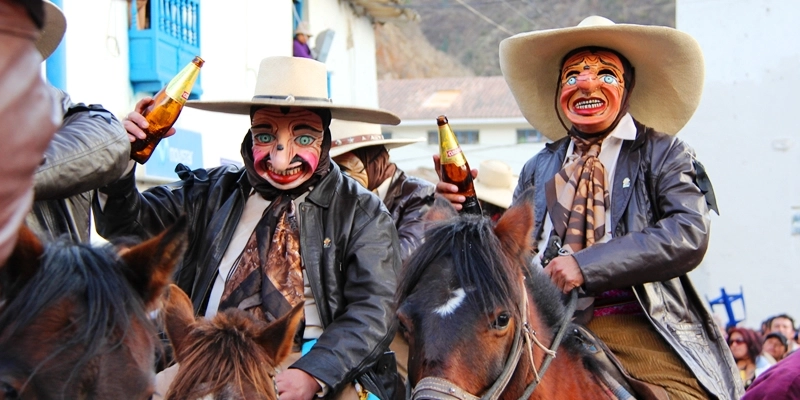
This dance mixes irony and joy, reminding us that not everything that glitters is gold.
Qhapaq Negro: faith and freedom
Qhapaq Negro is one of the most emotional dances. It represents enslaved Africans brought during colonial times, who—despite suffering—show deep devotion to the Virgin. They wear black, carry symbolic chains, and sing as they dance.

This dance honors memory, resistance, and the longing for justice among the oppressed.
Auqa Chileno: parody of invasion
The Auqa Chilenos portray the enemy from the War of the Pacific. They wear exaggerated costumes and dance clumsily—a patriotic satire where humor becomes a form of resistance. They follow the procession simulating combat but are always defeated by the people’s faith.
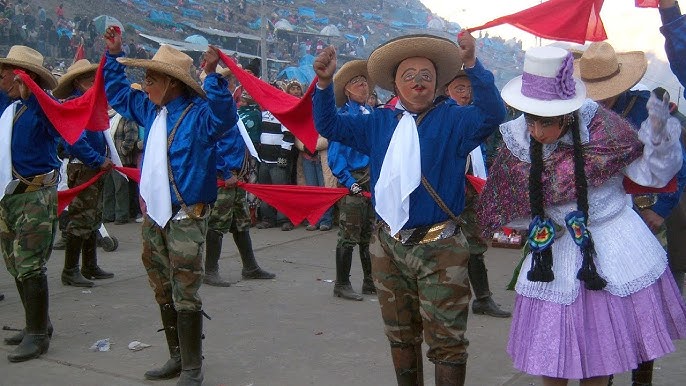
Here, dance becomes a form of historical catharsis and national pride.
Doctors or Siqllas: critique of power and justice
Doctors or Siqllas represent lawyers, judges, and figures of the colonial justice system. They appear as wise men but also corrupt. Their dance includes lofty and theatrical gestures, while they walk with books or legal documents in hand.
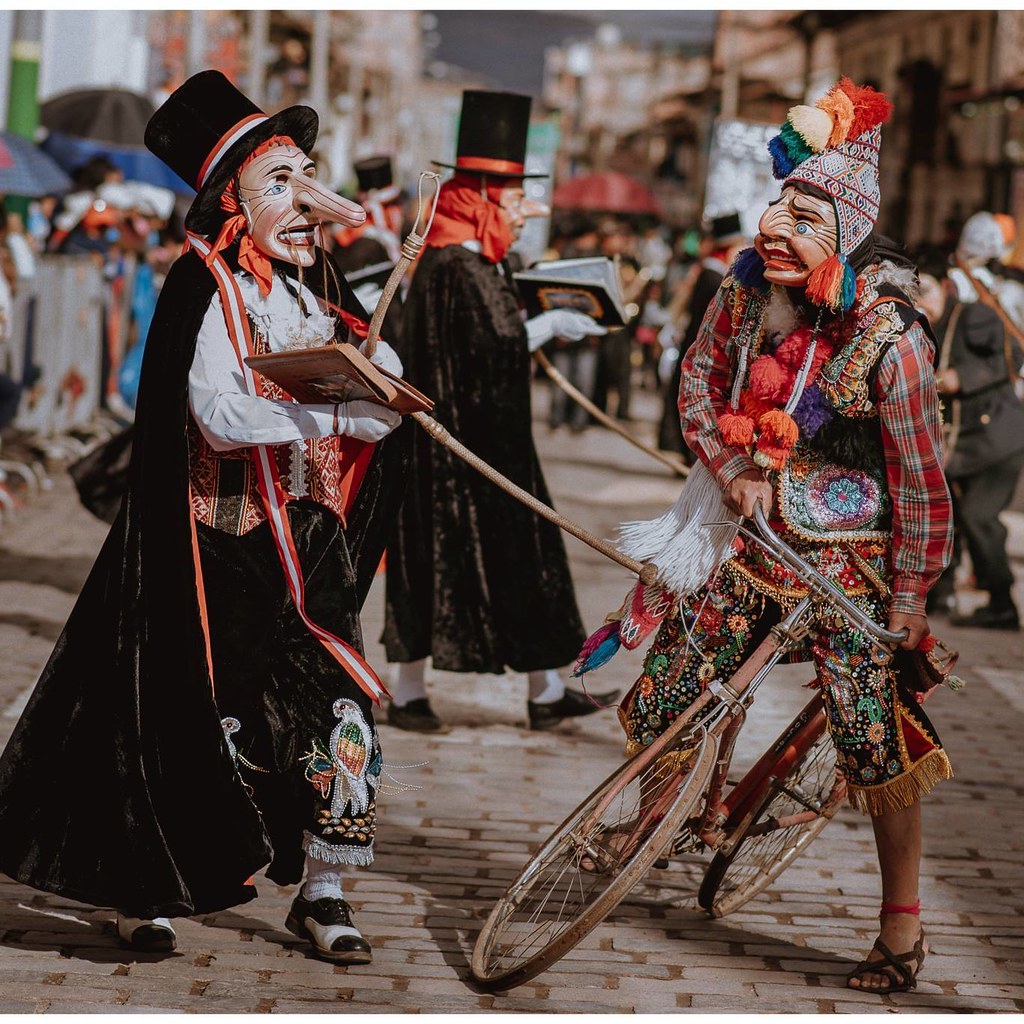
This dance reflects how people perceive justice: wise, but also unfair or distant.
Chucchu: the dance of illness
The Chucchus portray malaria sufferers those affected while working in mines and the jungle. The dance is shaky and erratic, with simulated coughing and fainting. Accompanied by fake doctors and nurses, it denounces the harsh conditions faced by workers.
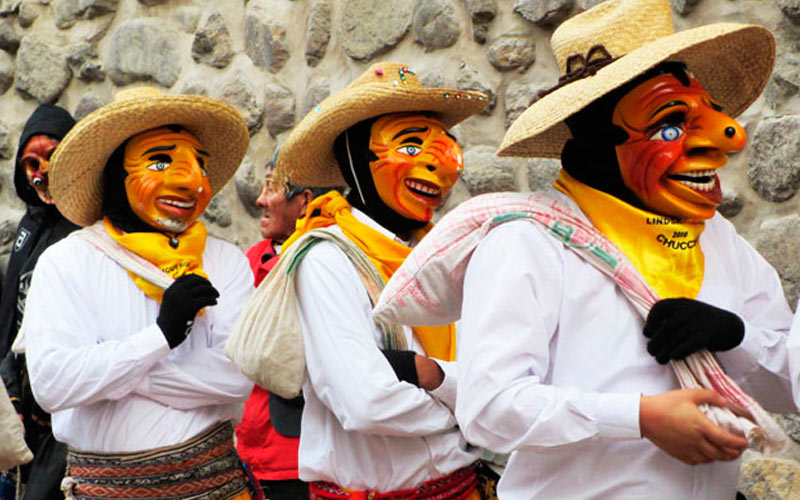
Through movement and satire, the Chucchus speak of human suffering and the fragility of life.
Paucartambo: a town that dances its history
Every year, from July 15 to 18, the small town of Paucartambo bursts into life to honor its Mamacha Carmen. Beyond religion, this festival is a living testimony to history, struggle, identity, and the joy of the Andean people.
If you decide to visit, you won’t just witness a celebration you’ll live the dancing soul of the Andes.